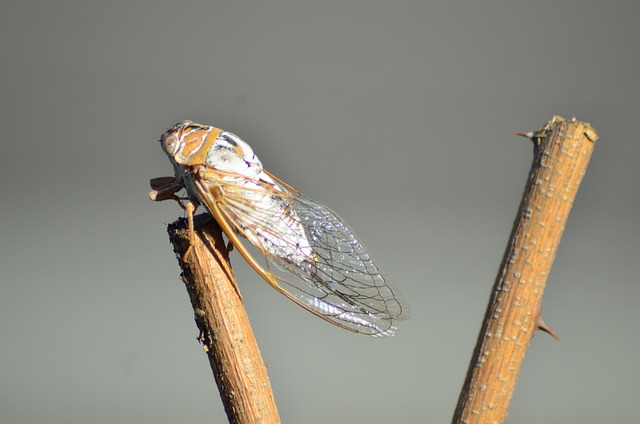Silverfish, resilient pests evolving for millions of years, thrive in dark, moist environments causing damage to paper, fabrics, and food. Traditional chemical insecticides pose health and environmental risks, leading to a growing demand for eco-friendly silverfish solutions. Alternatives include natural repellents like lavender, cedar oil, and diatomaceous earth, mechanical controls like sealing entry points and regular cleaning, biological controls (e.g., nematodes, spiders), and Integrated Pest Management (IPM) combining these methods with monitoring, sanitation, and environmental modifications. Advanced technologies, smart home systems, and AI predict and target silverfish activity while eco-friendly silverfish solutions maintain a holistic approach through sustainable practices like clutter reduction, sealing entry points, ventilation improvement, natural repellents, and promoting beneficial insects.
Silverfish, those pesky critters, have long plagued homes and businesses. Traditional methods offer some control, but with evolving environmental consciousness, there’s a push for more sustainable, eco-friendly silverfish solutions. This article delves into the world of these tiny invaders, exploring advanced technologies that revolutionize detection and eradication. From understanding their behavior to implementing green practices, discover how modern innovations provide effective, environmentally conscious ways to manage and prevent silverfish infestations.
Understanding Silverfish: Behavior and Traditional Control Methods
Silverfish are delicate, insectoid creatures that have evolved over millions of years to thrive in diverse environments, making them resilient pests. Known for their ability to move swiftly and their preference for dark, moist spaces, they can quickly multiply and cause damage to various materials, especially paper products, fabrics, and stored food items. Understanding their behavior is the first step towards effective control. These insects are primarily nocturnal, avoiding light, and often found in cluttered areas, making them difficult to detect until they’ve already established a significant population.
Traditional methods of silverfish control involve chemical insecticides, but these can have drawbacks, including potential health risks for occupants and environmental damage. As such, there’s a growing demand for eco-friendly silverfish solutions. Natural repellents like lavender, cedar oil, and diatomaceous earth have shown promise, as do mechanical controls such as sealing entry points, maintaining proper humidity levels, and regular cleaning to remove their preferred food sources and hiding places.
The Rise of Eco-Friendly Solutions for Silverfish Management
In recent years, there’s been a growing trend towards adopting eco-friendly solutions for silverfish management, driven by both environmental consciousness and a desire to avoid harsh chemicals. Traditional pest control methods often rely on synthetic pesticides that can be harmful to both the environment and non-target organisms, including pets and beneficial insects. As such, homeowners and professionals alike are increasingly seeking alternative approaches.
Eco-friendly solutions for silverfish management include the use of natural repellents, biological controls, and integrated pest management (IPM) strategies. Essential oils like lemon, peppermint, and neem have shown promise as natural deterrents, disrupting silverfish behavior without leaving toxic residues. Beneficial insects such as nematodes and spiders can also be introduced to prey upon silverfish larvae, helping to reduce their population over time. IPM combines these methods with regular monitoring, sanitation, and modification of the environment to create a hostile habitat for silverfish, offering a sustainable and long-term approach to control.
Advanced Technologies: Revolutionizing Silverfish Detection and Eradication
Advanced technologies are reshaping the way we detect and eliminate silverfish, offering more effective and eco-friendly silverfish solutions. These innovations include sophisticated monitoring systems that employ motion sensors, heat detection, and even pheromone traps to pinpoint the presence of these elusive pests. By leveraging data from these tools, professionals can precisely target infestations without resorting to harsh chemicals.
One promising development is the integration of smart home technology and artificial intelligence (AI). AI-driven apps and devices can analyze patterns, predict silverfish activity, and provide real-time alerts. This proactive approach allows homeowners and pest control specialists to take swift action using targeted treatments that are safer for both people and the environment.
Implementing Sustainable Practices for Long-Term Protection Against Silverfish
Adopting sustainable practices offers a holistic and eco-friendly approach to managing and controlling silverfish infestations long-term. Instead of relying heavily on chemical pesticides, which can have detrimental effects on the environment and potentially reinfestation, integrating natural prevention methods is key. Maintaining a clean and clutter-free living space is an essential first step. Silverfish thrive in dark, humid environments with easy access to food sources like paper products, cardboard, and starchy items. Regularly cleaning and decluttering areas prone to infestation can significantly reduce their habitat and food availability.
Additionally, sealing entry points and improving ventilation can create an inhospitable environment for silverfish. Using natural repellents like cedar wood oil or diatomaceous earth is another effective strategy. These eco-friendly solutions disrupt silverfish behavior without harming humans or pets. Moreover, promoting a balanced ecosystem by fostering beneficial insects that prey on silverfish can contribute to sustainable protection. Implementing these practices not only ensures a more environmentally conscious approach but also provides ongoing prevention against future silverfish infestations.
In conclusion, the evolution of advanced technologies in silverfish detection and treatment offers a promising future for both professionals and homeowners seeking effective yet sustainable pest control. By embracing innovative methods, such as thermal imaging, digital monitoring systems, and targeted chemical applications, we can achieve efficient silverfish management while minimizing environmental impact. Combining these cutting-edge tools with eco-friendly practices ensures long-term protection against these pests, fostering a healthier and more harmonious living environment. Adopting these advanced eco-friendly silverfish solutions is not just a step towards pest-free spaces but also contributes to preserving the planet’s delicate balance.
